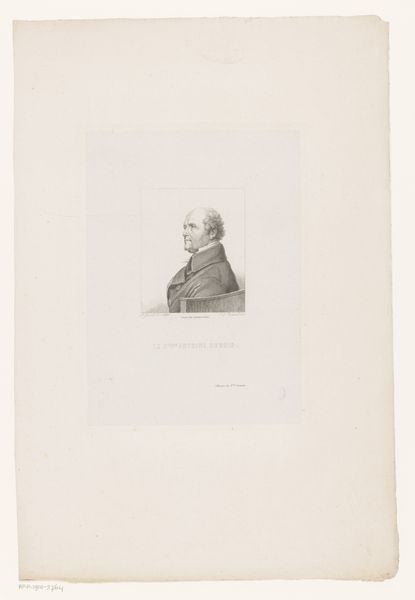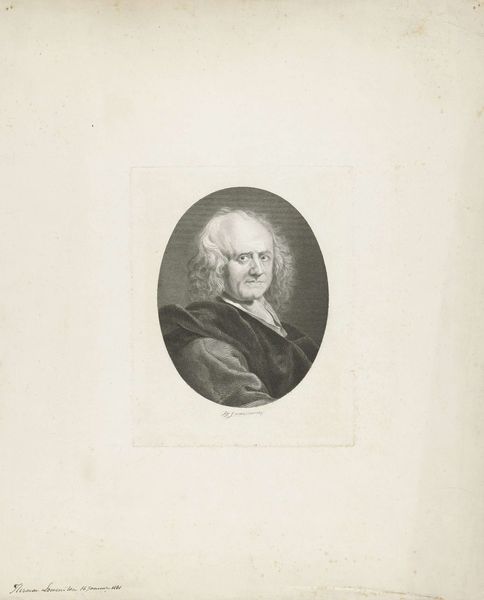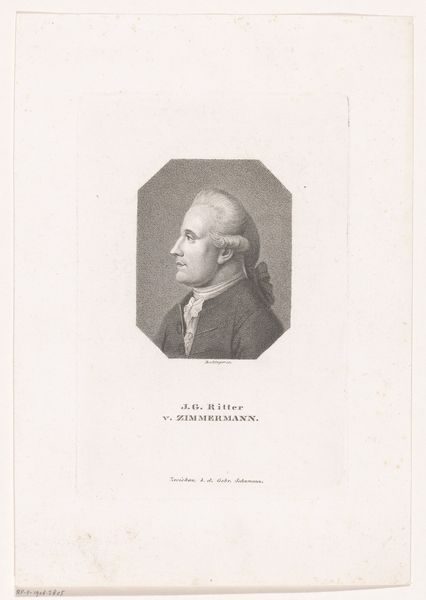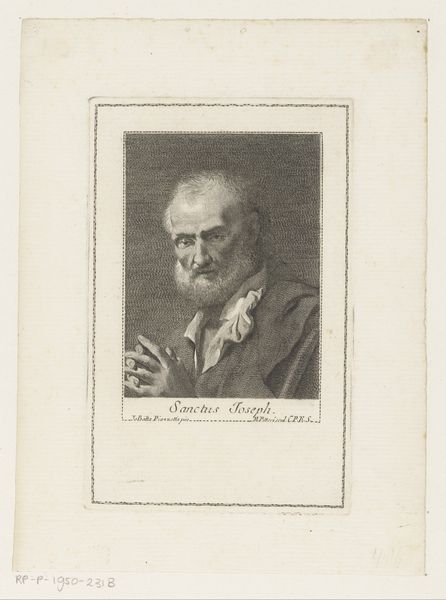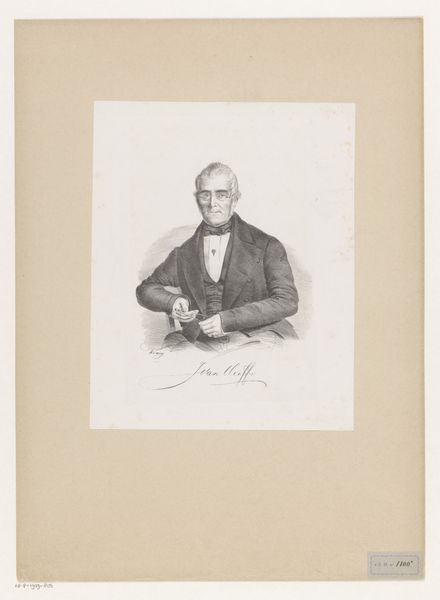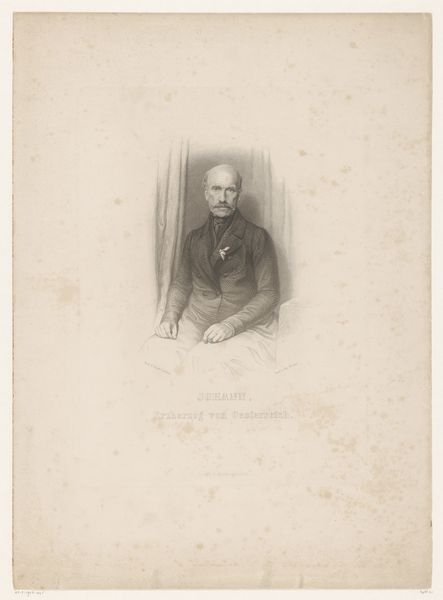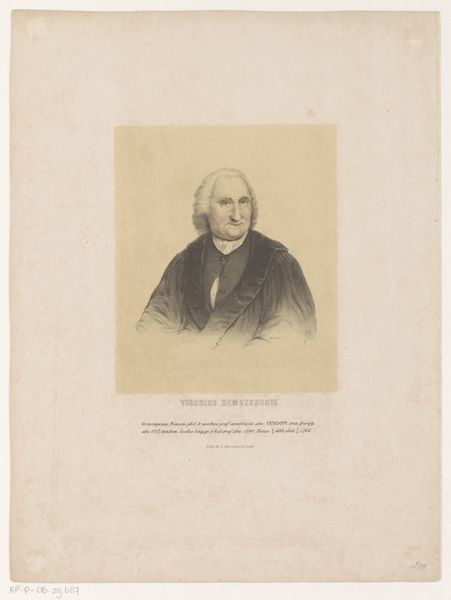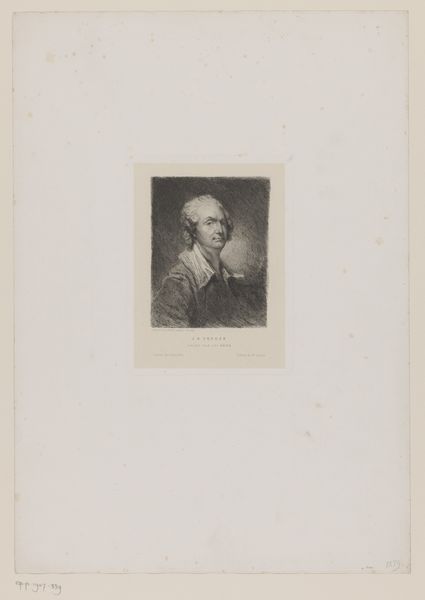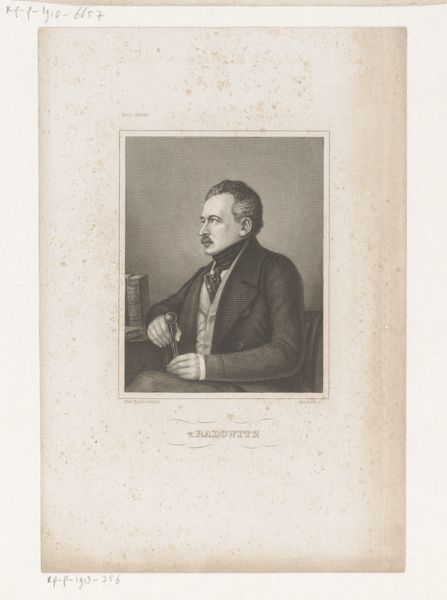
drawing, print, engraving
#
portrait
#
drawing
#
baroque
# print
#
pencil drawing
#
engraving
Dimensions: sheet: 11 9/16 x 9 13/16 in. (29.4 x 25 cm)
Copyright: Public Domain
Curator: What strikes me first is the intensity in his eyes; it’s almost unsettling. There's such a weight in that gaze. Editor: And he's certainly been captured with great attention. We’re looking at a portrait of Joseph Carreras rendered in 1735 by John Faber the Younger, currently held here at The Met. This artwork is a masterful engraving, showcasing Faber’s skill in capturing the likeness and, perhaps, the spirit of its sitter. Curator: Yes, the technique really brings out the age and gravitas. Look at the subtle lines etched around his eyes and mouth. Those aren’t just wrinkles; they are indicators of experience etched in the soul. His slight downward glance also speaks volumes, almost like a prophet burdened with wisdom. Editor: Portraits of this era, particularly engravings, served as a form of public record, establishing the sitter’s presence and authority. Carreras’ identity and contribution clearly mattered, judging from the skilled labor applied to creating this image and its dissemination, I'm sure. Curator: Definitely. The act of depicting him holding a quill also elevates him. In an almost archetypal way, he looks like the ‘scribe’, the man in the know, which enhances that sense of inherited or revealed knowledge that radiates from him. It seems designed to communicate a profound sense of inherited wisdom or perhaps even prophecy. Editor: Exactly! It’s fascinating how this image would have functioned within a specific social and intellectual milieu. The Baroque period embraced grandeur and drama, which are somewhat subdued here, yet it hints to a certain standing that someone named "Joseph Carreras" would have held within society at the time. Think of the spaces in which it was originally displayed. Curator: And while it feels very personal, intimate even, the formality inherent in the print medium suggests the intended audience extended beyond the purely personal sphere. Editor: Right, something that’s both personal and public. And, given the layers we find in the symbolic encoding and the political and social context of portraiture in the 18th century, it is precisely this blend that is important in the visual imagery it has preserved. Curator: Indeed. This really encourages you to think about what it meant to capture someone's likeness and project a desired image to the world during this period. It’s a wonderful testament to human experience conveyed across centuries.
Comments
No comments
Be the first to comment and join the conversation on the ultimate creative platform.



